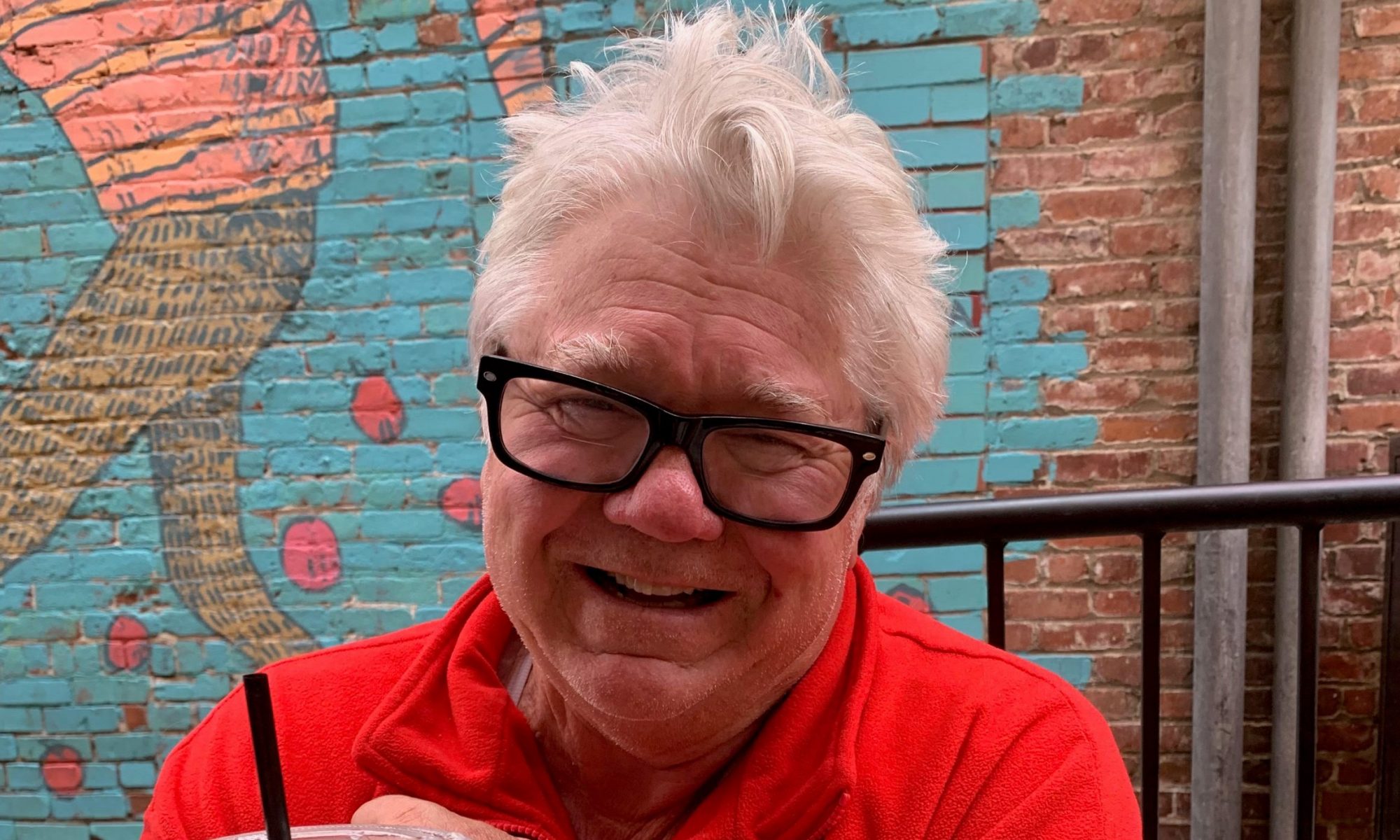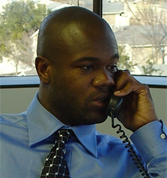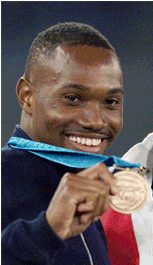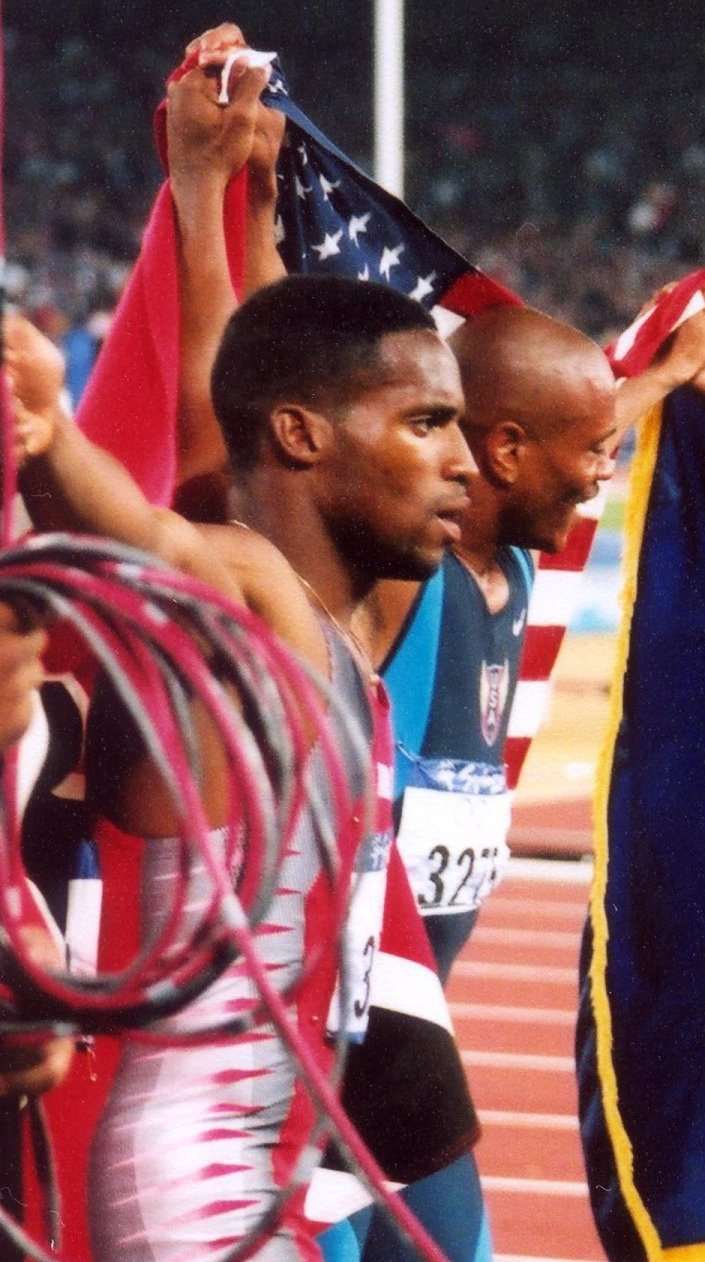A Redlands Connection is a concoction of sports memories emanating from a city that once numbered less than 20,000 people. From pro football’s Super Bowl to baseball’s World Series, from dynamic soccer’s World Cup to golf’s and tennis’ U.S. Open, major auto racing, plus NCAA Final Four connections, Tour de France cycling, more major tennis like Wimbledon, tiny connections to that NBA and a little NHL, major college football, Kentucky Derby, aquatics and Olympic Games, that sparkling little city sits around halfway between Los Angeles and Palm Springs on Interstate 10. An Olympic-bound athlete used that road to take some real track travels. – Obrey Brown
University of Redlands track & field coach Clay Brooks raved about Ruth Kleinsasser. So did his boss, Director of Athletics Ted Runner.
Brooks, who spent years at that university, seemed a true professor. Runner, whose Redlands presence as an athlete, coach and, ultimately, director of athletics, was fond of track. He’d competed. For years, he coached.
Kleinsasser, eventually marrying as Ruth Caldwell and also Ruth Wysocki, stepped onto Los Angeles Coliseum’s Olympic Games track some nine years after spending that frosh season at Redlands. Those two men, Brooks and Runner, watched with great interest.
That Alhambra-born Kleinsasser, who competed at Azusa High School, was a prized performer at Redlands in 1975. What made Kleinsasser special was her true dedication. She was a lifer in track.
It started in age-group races in the late 1960s, starting an eventual period of about 30 years, until she became an over-40 Masters runner in 1997. In between, there was plenty to remember.
As an Azusa High senior in 1973, she ran a 2:16 to win a CIF-Southern Section 880-yard championship. She also sped around the track over 440 yards, winning in 57.3. That’s as tough of a double in any championship meet.
Since there was no State meet held for girls that year – one would start in 1975 – Kleinsasser never had a chance to prove her prep domination throughout California.
By 1975, Kleinsasser was running at Redlands, primarily because internationally-renowned Bulldog coach Vince Reel had come out of retirement. Reel, in fact, met her halfway, training her somewhere in California – between Redlands and Azusa. Kleinsasser gave runs in both 400 and 800.

A YEAR IN REDLANDS
Reel, married to Chinese star Chi Cheng, had international status, especially since he’d lured some top talent – Chinese sprint star Lee Shiu-Chia, middle distance runners Chee Swee Lee, plus Donna Fromme and some dandy runners like distance star Molly O’Neil, hurdler Pam Ashe, sprinters Gloria Kennedy, Lynn Jones and Denise Becton.
Throw Kleinsasser into that mix. If only she’d lasted four seasons at Redlands. Reel wrote about his own exploits. Part of his writings were about Kleinsasser, including that season at Redlands.

Kleinsasser dropped out of Redlands, saying, “I realized I had chosen the wrong school. Not that it isn’t a wonderful place. It was not just the right place for me. That was before the NCAA for women.”
Ruth – just so readers don’t know she’s a Kleinsasser, Wysocki or a Caldwell – told Reel during days when women’s sports were governed by that old AIAW. Truth is, in those days, Redlands’ men were part of the NAIA, not NCAA. Face it. NCAA duels were well above what Redlands had going in those days.
A more familiar name may well be Ruth Wysocki. Kleinsasser? Wysocki? Caldwell? Well, let’s go with Ruth from this point.
In reality, Ruth wasn’t even the fastest half-miler on her own team. That same season, Lee Chiu-Shia ran a 2:05.36 in SPAA, a meet at track-rich Occidental College, just outside of Pasadena.
At the Bakersfield Invitational, Kleinsasser posted that 2:07.6.
What made Ruth “A Redlands Connection” was that year she spent running at Brooks’ college coaching. In 1975, she ran fast – 2:07.6 over 800 meters, plus a 56.80 over 400 at the Long Beach Invitational. Afterward, she transferred back to Citrus College, a junior college.
More domination. At Citrus, Ruth scored victories in the State cross country championship for both 1977 and 1978. During spring seasons in 1978 and 1979, she was State champion over both 800 and 1500 runs.
There was a pattern here. Like many international competitors, she was laying groundwork for Olympic chase. In fact, she ran a 2:03, qualifying for Olympic Trials in 1976 – still under Reel’s watch. She was 19. Ruth took eighth at those Trials.
She was on-again, off-again training – seriously, pondering, planning.
RUTH SLAYED SLANEY
If there was a top-flight moment for that ex-Redlands runner, it might be these:
Ruth upset highly-touted USA star Mary Decker, racing 2:01.99 in an 800 chase at U.S. Championships in 1978. Ruth scored another upset victory against Decker – eventually Mary Slaney – at U.S. Olympic Trials for 1984, this time over 1500 meters.
Ruth outsprinted Slaney to win in 4:00.18, her lifetime best. It was her husband, Tom Wysocki, training for Olympic Trials, that had convinced his wife for Olympic training.
Brooks, who was Reel’s successor at Redlands, along with Runner, who were both coming to the end of their Redlands careers, watched with curiosity as that one-year Lady Bulldog star made her way into those 1984 L.A. Games.
Ruth took sixth over an 800, eighth in 1500.
To veteran observers like Brooks and Runner, it was a Redlands victory. One of their own had reached a pinnacle in that sport.
Who cared if Eastern Bloc nations had boycotted the 1984 Games? Remember, this was Carl Lewis’ 4-event gold medal blast in men’s events.
Women sensationalists included sprinters Valerie Brisco-Hooks, Evelyn Ashford, plus Flo Jo – Florence Griffith Joyner – plus onetime San Gorgonio High School star Sherri Howard, part of America’s 4 x 400 gold medal win, Jackie Joyner-Kersee, along with marathon champion Joan Benoit.
More men: Britain’s Daley Thompson scored his second straight decathlon title.
Americans. Hurdler Edwin Moses. Triple jumper Al Joyner.
ANOTHER REDLANDS CONNECTION
Step away from Ruth for a just a moment. It’s adding to the flavor of Redlands connections:
One year before the L.A. Games, in 1983, Redlands’ annual invitational came on its cinder track. Two interested participants were Colorado-home Air Force Academy and California’s Azusa Pacific University, among over a dozen other team entries.
In that meet-concluding 4 x 400 relay, Air Force’s Alonzo Babers and Azusa’s Innocent Egbunike ran neck-and-neck on that anchor. They might have even brushed against one another halfway during an unforgettable final lap.
From the home bleachers, 200 meters in, Egbunike could be seen turning his head toward Babers. Was there a connection? Did someone say something perplexing? Neither runner broke stride. Egbunike prevailed. Barely. There would be a highly interesting rematch. Of all places, it was at the Olympics.
It was that following year, both met in the open 400-meter – Egbunike for his native Nigeria and Babers for the U.S. Curiously, no one among national or international media mentioned their previous duel in Redlands.
Babers, in fact, won that Olympic gold in 44.27 seconds. Egbunike was last, 45.35. Those two dueled again in the 4 x 400 relay.
USA’s Sunder Nix, Ray Armstead, Babers and Antonio McKay won gold, prevailing in 2:57.91. Nigeria, anchored by Egbunike, took third in 2:59.32 for a bronze.
*****
Back to Ruth! That Redlands Connection kept going for years. Over a decade later, in 1995, Wysocki ran seventh in the 1500 at the Championships in Athletics in Gothenburg. That’s Sweden.
In 1997, Ruth set several Masters records at distances from 800 to 5000 on the track, plus 5K and 8K road races. She was surrounded by distance runners. Her dad, Willis Kleinsasser, was a successful Masters athlete.
Alan Kleinsasser, her brother, ran a 1:50.5 over 800 meters and a 3:52.2 clocking in the 1500 – both school records at Caltech Institute of Technology in Pasadena.
Then, of course, her one time husband, Tom Wysocki, produced 13:35.33 in the 5000-meter and 28:19.56 in the 10,000.
RUTH AT THOSE L.A. OLYMPICS
It wasn’t going to be easy. Despite absences of Eastern Bloc nations, that boycott led by former Soviet Union, there was still plenty of international talent.
On Aug. 6, Romanian Doina Melinte circled the Coliseum track twice to score gold in 1:57.60. USA’s Kim Gallagher, whom Wysocki had often encountered, won silver in 1:58.63. Melinte’s teammate, Fita Lovin, took bronze at 1:58.53.
Ruth? Sixth in 2:00.34. She also qualified in the 1500, held on that 1984 August 11 race. Ruth took eighth as America’s best in 4:08.32, nowhere close at her USA Trials.
Melinte won the silver, barely nosed out by Italy’s Gabriella Dorio’s 4:03.25, the Romanian a fraction behind in 4:03.76. Another Romanian, Maricica Puica, took bronze in 4:04.15.
Ruth had to be thinking if she’d matched her lifetime best – that 4:00.18 at the Olympic Trials – she’d have been a gold medalist.
Said Ruth: “Even though the Olympics didn’t go really great for me, when I got to Europe after the Olympics, I beat everybody that beat me in the Olympics, including (Dorio).”
It was, she said, some vindication.
Brooks, for his part, sent plenty of half-milers out to do battle in Lady Bulldog colors. Runner, meanwhile, often reflected on that year Ruth ran at Redlands.
“She was,” Runner said, “not just a hard worker.” Runner said, observers could easily tell, “she had a game plan in any race she ran.”
She even made one last attempt to qualify for the 1996 Olympics at 38. Didn’t make it.
That one season, 1975, Ruth was A Redlands Connection.




